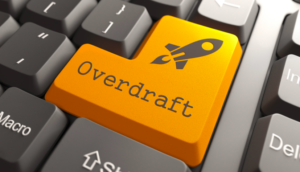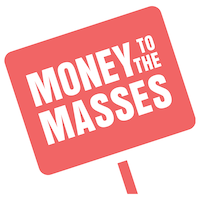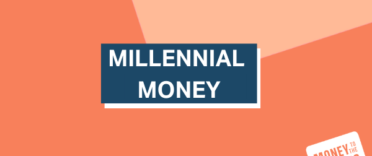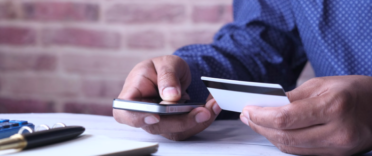
1. Use savings to pay your overdraft off
If you have money in savings but also have expensive borrowing such as an overdraft, it can often make sense to channel that money into paying off some or all of that debt. Even with the best savings rates, you would likely save much more in interest payments by paying off an overdraft at 40% APR than you would earn from an easy-access savings account. By choosing to not clear your debt with your savings you are effectively paying to have a savings account, due to the amount of interest you are being charged on your debt versus the amount of interest you are earning on your savings.
A general rule of thumb is to pay off your most expensive debts first and usually this will mean your overdraft, unless you have a payday loan or credit card with a particularly high APR. While you then won't have as much of a financial safety net to cover unexpected costs, you may be able to use your overdraft facility if an emergency were to crop up and you needed to borrow money fast in the future. Alternatively, you may find a personal loan or credit card at a cheaper rate in the event of, for example, your boiler breaking or your car needing urgent repairs. Better still is to build up your savings pot again after you've paid off your overdraft, which will ultimately put you in a much stronger financial position overall. Read our article 'Building an Emergency Fund – the what, why & how'.
2. Transfer your overdraft debt to a money-transfer credit card
While many people have the preconception that going into an overdraft isn't 'proper' borrowing and taking out a credit card is a more serious financial commitment, a credit card can actually often work out to be a cheaper form of borrowing. In addition, if it is used responsibly, a credit card can have a positive impact on your credit rating, whereas constantly sitting in your overdraft can have a detrimental effect.
One way of getting on top of your overdraft debt is to utilise a 0% interest offer on a credit card. While balance transfer cards can be used to pay off other credit or store cards, you generally can't use them to pay overdraft debt. Instead, by using a money-transfer credit card with a competitive 0% interest period, you can transfer funds to your bank account and repay your overdraft. You will then want to pay off the balance on the card in full by the end of the introductory period in order to avoid paying any interest. Bear in mind that you will be charged an up-front transfer fee for transferring funds from the money-transfer credit card into your bank account, typically between 2-4% of the amount transferred.
3. Switch to a cheaper overdraft
While they are increasingly rare, there are still some interest-free overdrafts available, although the amount you will be offered and the period of time it will last for will be subject to status. If you can't get an interest-free overdraft, another option is to look for a lower-cost one. This is where app-only banks such as Starling and Monzo are currently leading the field, offering rates from 15% and 19%, respectively. However, this is subject to status and could be as high as 35% (Starling) or 39% (Monzo).
4. Take out a personal loan to pay off your overdraft
If you have a substantial overdraft, you may consider taking out a loan to pay it off, as it will typically have a much lower interest rate and will almost certainly save you money. It is important, however, to make sure you can afford to meet the monthly repayments for the term of the loan, as late or missed payments will feature on your credit file and could affect future borrowing.
Using a loan to write off an overdraft should be viewed as a one-time solution and, ideally, you should then remove the overdraft facility from your bank account to avoid getting into the same situation again. Falling into a trap of taking out loans to pay off overdrafts and then building up overdraft debt again would have a catastrophic effect on your finances.
5. Reduce your overdraft over time
Although you may want to pay off your overdraft in one go, accepting it may take some time to clear the debt and putting together a plan for how to achieve is a positive step. Indeed, the steps you take to tackle your overdraft can form the basis of good habits that will stop you getting into unnecessary debt in the future. These include:
Budgeting
By managing your day-to-day spending more efficiently, you may be able to free up some cash to start chipping away at your overdraft. By making your overdraft repayments a priority and cutting back on non-essential spending, you can pay it back even faster, saving you money over the long term.
For advice on budgeting, read our article 'The best budgeting apps in the UK'.
Using windfalls and bonuses
It's good practice to use any extra money you receive to pay down any debt, including your overdraft. This includes commission or bonuses from work, gifts or inheritance.
Moving your direct debits
By moving direct debits and standing orders for bills to just after you get paid means you have a better understanding of how much money you have left for the remainder of the month, meaning you are less likely to slip further into your overdraft. Similarly, opting to pay off a chunk of your overdraft just after payday also helps instil the habit of paying off debt as a priority.
Reducing your overdraft facility
As you pay off your overdraft, you can ask your bank to reduce your limit to help you avoid the temptation of using it again in the future. This means that once the full amount is paid off, you can opt to have no overdraft facility or a minimal limit.
What to do if you are struggling to pay off overdraft debt
If you feel your overdraft debt is overwhelming and you are finding it difficult to keep on top of it, the first thing you should do is speak to your bank. It may be able to restructure your debt to make it easier to manage, reduce your interest rate or give you a short period of respite from having to pay the interest.
There are also a number of organisations set up to help people struggling with debt, including Citizens Advice and StepChange. For further sources of help, see our article 'Where to get free debt advice', or you may find our article on debt and mental health helpful.
If a link has an * beside it this means that it is an affiliated link. If you go via the link Money to the Masses may receive a small fee which helps keep Money to the Masses free to use. But as you can clearly see this has in no way influenced this independent and balanced review of the product.







